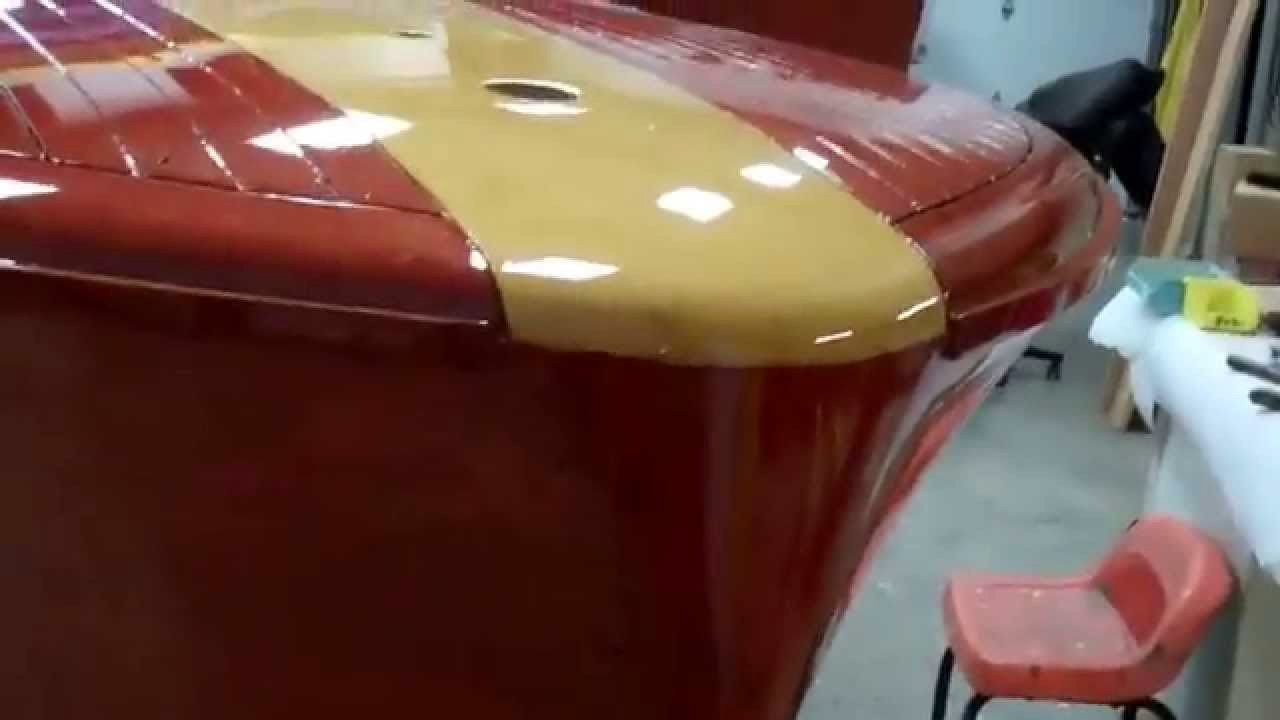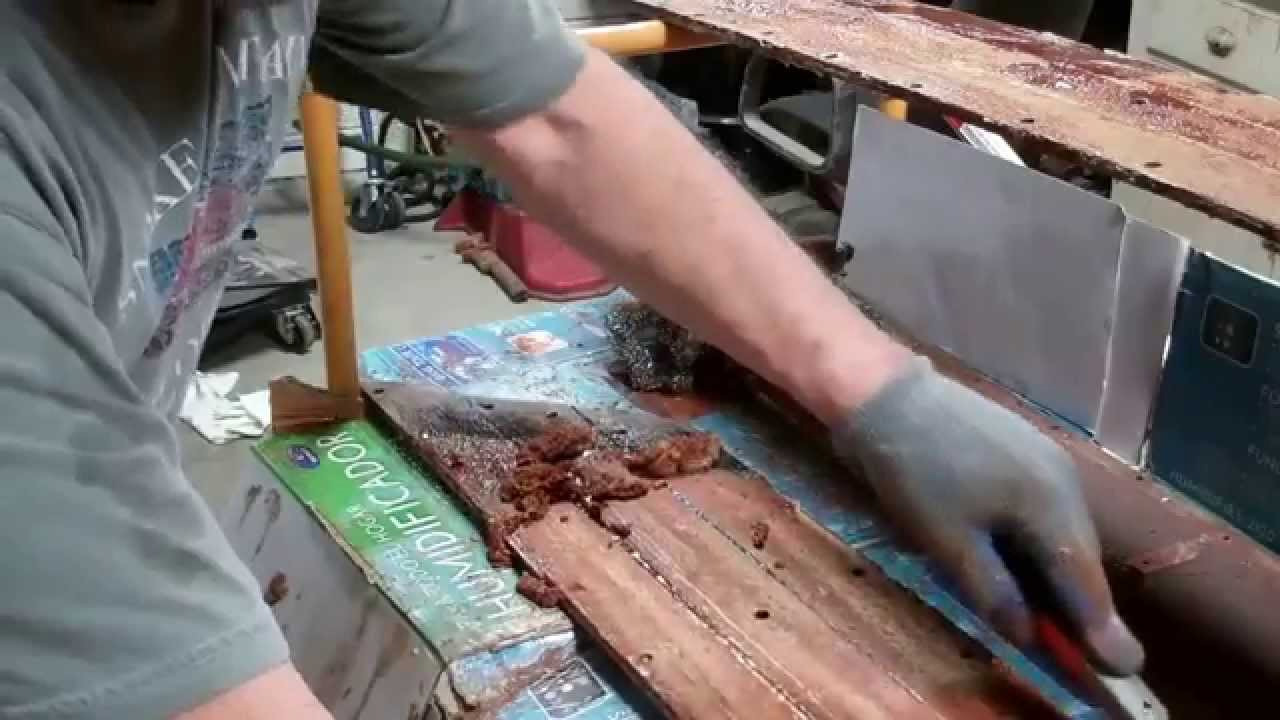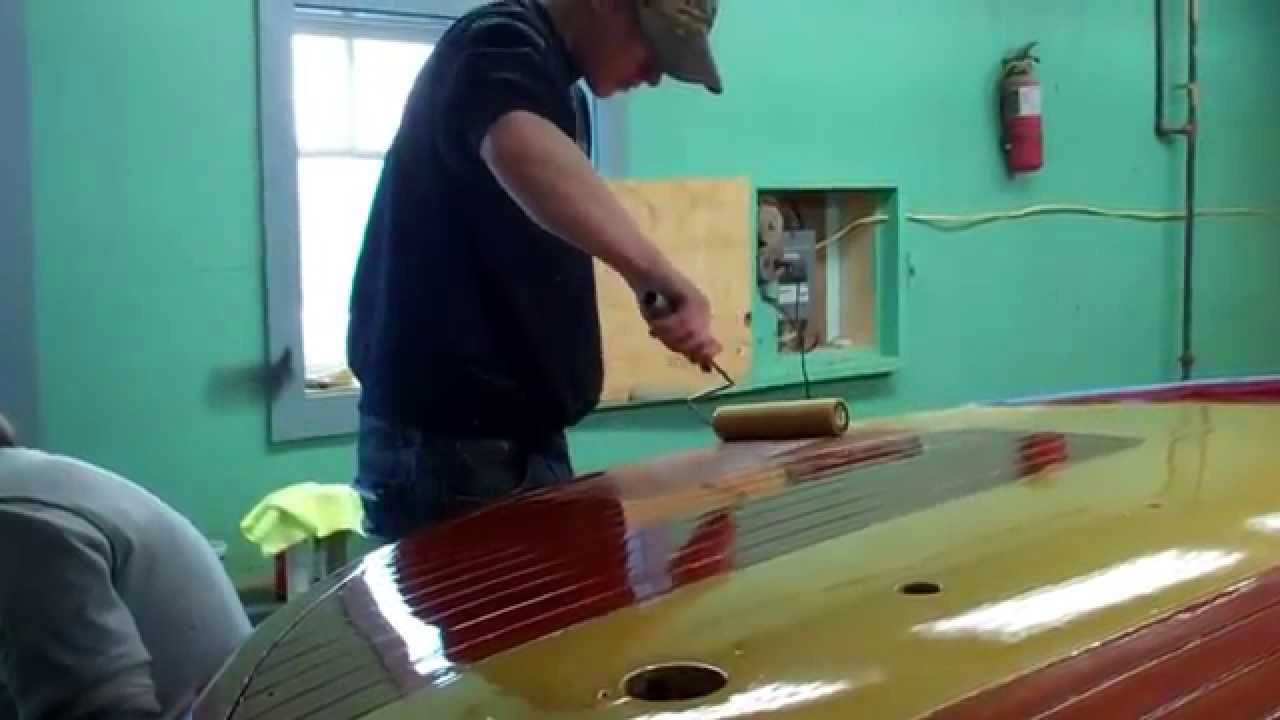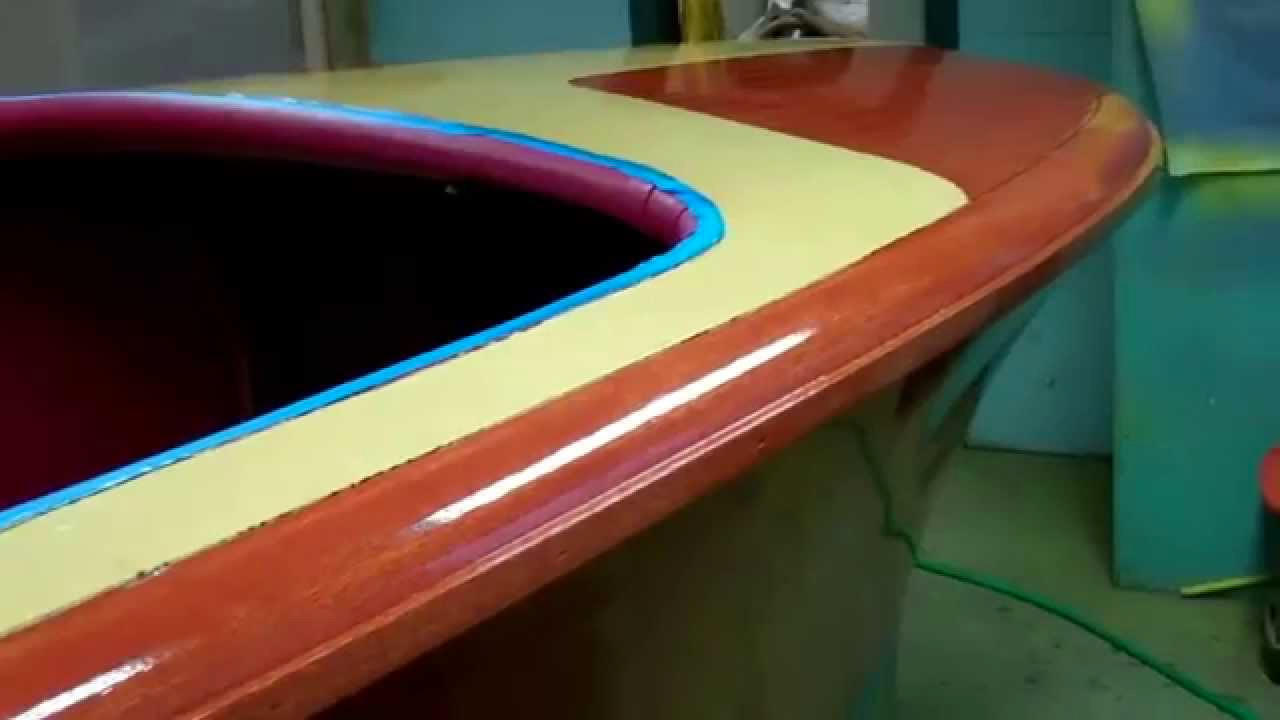We are one coat closer, and “only” seven more coats and three comprehensive sanding sessions away from our interim goal of 15 coats of Pettit Hi-Build varnish rolled and tipped onto the 1952 Chris-Craft Riviera Runabout. RJ keeps teasing about shooting for twenty,
RJ’s last pass with 400 grit dry paper made the surface noticeably flatter, and therefore the eighth coat much glossier, but, as I believe this clip illustrates. However, diminishing returns will almost certainly begin setting in once the ninth coat is applied and Rj sands again, this time with 600 grit.
Several of you have wondered about the tension between building coats and then sanding them away with overly vigorous attempts to sand the surface really flat. You are correct, but our experience is that, at least for the first six to eight coats, we are still filling declivities.
Unless we are dealing with a particularly open surface, the sanding we do following the eighth coat is aimed at knocking any dirt or dust that settled during curing out of the varnish. Our goal now is building film thickness, which deepens the gloss and provides additional UV protection.
So Happy New Year to our entire community. Thank you for following us during 2014. We will be back to you with more updates on the other side of our New Year’s celebration.




